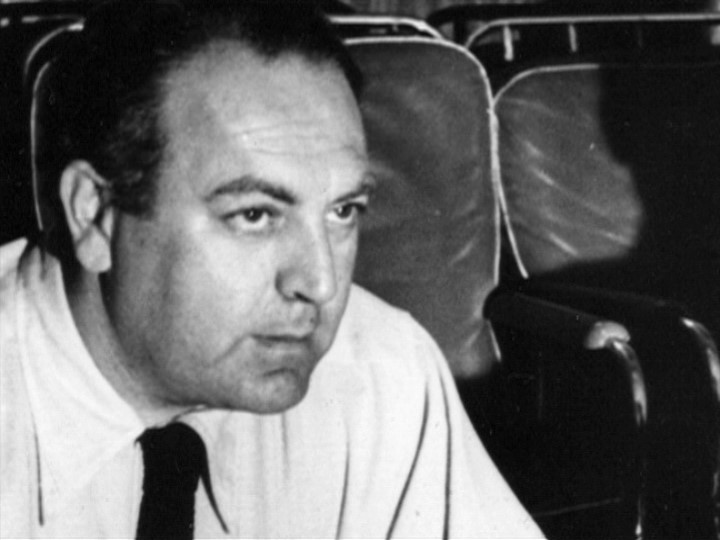Despite the fact that the budgets during his glory days at RKO were minuscule, Val Lewton has become an outstanding example of the movie producer as auteur, leaving a mark on his “B” horror movies of the mid-1940s that is more distinct than that of their various directors.
Lewton (1904-1951) was born Vladimir Ivan Leventon in Yalta, Russia, and came to the U.S. at the age of seven with his mother, who was a sister of actress Alla Nazimova. He enjoyed a rather lurid early career as a writer, working as a reporter known for totally fabricating at least one story, and as the author of pornography. He often used pseudonyms, one being the name that would stick: Val Lewton. He entered films in 1933 as an editorial assistant to producer David O. Selznick.
In 1942 Lewton was put in charge of a new unit at RKO that was to specialize in low-budget horror films. His first film under this arrangement, Cat People (1942), was directed by Jacques Tourneur and stars Simone Simon as a woman who takes on catlike qualities when aroused by jealousy. In a style that was to become defining and influential, Lewton refrained from showing the menace clearly and relied upon atmospheric photography, sound effects and music to convey a palpable sense of dread. Lewton, sometimes credited under the pseudonym Carlos Keith, also contributed to the movies’ screenplays.
Other examples of Lewton’s evocative, sophisticated style during this period at RKO (which lasted only three years) are Mark Robson’s The Seventh Victim (1943), starring Kim Hunter as a woman who fears her sister has been taken over by a witches’ cult in Manhattan; Tourneur’s I Walked with a Zombie (1943), with Frances Dee confronting the terrors of voodoo in the West Indies; Tourneur’s The Leopard Man (1943), in which horrible murders in a New Mexico town are wrongly blamed on a leopard; Robson’s The Ghost Ship (1943), with Richard Dix as a bedeviled ship’s captain; Robert Wise and Gunther von Fritsch’s surprisingly gentle The Curse of the Cat People (1944), with Simon returning in her role as the “cat woman” character and playing a guardian angel of sorts to an imaginative little girl; Wise’s The Body Snatcher (1945), with Boris Karloff and Bela Lugosi teamed memorably as a grave robber and his assistant; and Robson’s Bedlam (1946), with Karloff as the master of the notorious 18th-century British insane asylum. Lewton, working with a larger budget than usual, based the latter film on one of the illustrations in William Hogarth’s series of paintings The Rake’s Progress.
Beginning in the late 1940s Lewton moved on to “A” budgets at other studios, but health problems and other factors led to his producing only three more movies: the romantic melodrama My Own True Love (1949) at Paramount, the romantic comedy Please Believe Me (1950) at MGM and the Western Apache Drums (1951) at Universal. His premature death at age 46 was the result of a heart attack.

